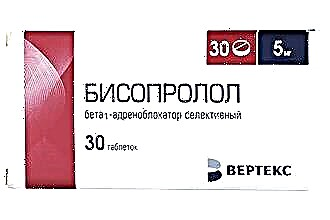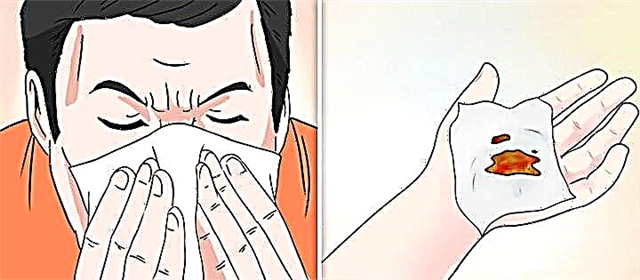Chronic cardiovascular diseases, constant inflammatory processes, as well as intoxication lead to electrolyte imbalance and metabolic processes in the myocardium. It is the concentration of potassium, sodium, magnesium ions and the functional activity of the channels that ensure the normal transmission of impulses along the intracardiac pathways. Violation of electrical excitation in any part of the conducting system leads to inadequate blood circulation and interruptions in the work of the heart.
Description, reasons and types
The conducting system of the heart consists of several sections. An electrical impulse is produced in the sinoatrial node, at the place where the vena cava flows into the right atrium. The signal is transmitted along the fibers of the Bachmann, Torel and Wenckebach bundles inside the atrial myocardium (first the left, then the right) to the atrioventricular node. Excitation of atrial cells is provided mainly by the functioning of the Bachmann bundle. The signal is transmitted to the ventricular myocardium through the His bundle and Purkinje fibers.
Adequate passage of the impulse with the preservation of intervals and pauses corresponds to the systolic and diastolic phases of the cardiac cycle.
Sometimes, in one of the sections of the conducting system, the conduction of an electrical signal is slowed down (blockade). This process is called conduction disturbance. Pathophysiologically, the blockade develops for two reasons: insufficient activity of nerve fibers and their low sensitivity to mediators.
There are two types of pathology:
- Incomplete - the impulse passes from the right atrium to the left over a longer period of time.
- Full - both cameras work independently of each other. Most often, the rhythm of the ventricles is provided by the sinus node, and the left atrium - by ectopic foci.
Violations are most often associated with an overdose of cardiac glycosides and other antiarrhythmic drugs. They also occur against the background of chronic ischemic heart disease, cardiomyopathy, rheumatic endocardial damage.
In pregnant women, arrhythmias can be caused by: an increase in the amount of estrogen and chorionic gonadopropin, increased sensitivity of adrenergic receptors and the accumulation of fluid in the body.
Inspection and instrumental diagnostics
Deceleration of intra-atrial conduction is characterized by nonspecific symptoms of rhythm disturbances:
- a feeling of interruptions in the work of the heart - additional extraordinary contractions;
- sudden attacks of increased heartbeat;
- "Freezing" in the chest;
- shortness of breath - in case of prolonged progression of pathology.
The onset of pathology is always associated with organic damage to the myocardium, therefore, during the clinical examination of the patient, the symptoms of the underlying disease come to the fore:
 vegetative-vascular dysfunction - sweating, facial redness;
vegetative-vascular dysfunction - sweating, facial redness;- arrhythmic pulse with satisfactory filling and amplitude characteristics;
- lability of blood pressure;
- ultrasound examination - areas of hypokinesia, significant expansion of the left atrial cavity.
The diagnosis of "intra-atrial block" is determined by the results of electrocardiography (ECG). Criteria:
- lengthening of the P wave by more than 0.12 s in II, III, aVR;
- change in the shape of the tooth - splitting, two-phase, flattening.
Depending on the data of the cardiogram, the degree (1, 2, 3) of pathology is distinguished. The first degree is most often accompanied by other rhythm disturbances - atrioventricular or intraventricular blockade, extrasystole.
Correction methods and treatment: what and when to do
An isolated violation of impulse conduction along the interatrial fibers, which is not accompanied by clinical symptoms, does not require treatment. Drug therapy is prescribed for the development of arrhythmias with hemodynamic disturbances: atrial fibrillation, extrasystole, paroxysmal tachycardia.
Used groups of drugs:
- antiarrhythmic: "Proponorm", "Cordaron", "Etatsizin", "Bisoprolol".
- cardiac glycosides: "Digoxin";
- diuretics: Eplerenone, Spironalokton, Torasemide.
High-grade intra atrial block that causes symptoms of heart failure requires a pacemaker (artificial pacemaker). Placing electrodes in both atria allows synchronizing the work of the myocardium.
Conclusions
Violation of the conduction of an electrical impulse from the right atrium to the left is caused by various diffuse pathologies of the myocardium of rheumatic, coronary or unknown origin. Isolated intra-atrial blocks do not cause hemodynamic disturbances and clinical signs of heart failure, however, they can cause the further occurrence of high-grade arrhythmias. Treatment of pathology is carried out depending on the underlying disease and the existing symptoms and involves the use of pharmaceuticals or the installation of an artificial pacemaker.

 vegetative-vascular dysfunction - sweating, facial redness;
vegetative-vascular dysfunction - sweating, facial redness;

